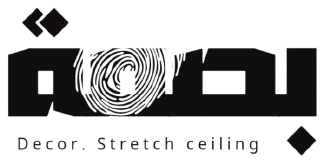Stretch ceilings are a modern solution known for delivering a sleek, smooth, and flawless surface. Whether you’re installing them in your home or office, they offer an efficient interior design option thanks to their quick installation and functionality. In this comprehensive guide, you’ll find the step-by-step process and required tools to ensure a successful stretch ceiling installation.
Tools You Need to Install Stretch Ceilings
Before starting, make sure you have the following tools ready for a precise and professional installation:
Stretch ceiling membrane (PVC or special fabric)
Aluminum frames for fixing the membrane
Heat gun to soften the membrane and make it flexible
Fastening tools such as screws, screwdrivers, and special clips
Measuring tape and level for accurate dimensions
LED lights (optional for hidden lighting setups)
Ladder or scaffold for easy ceiling access during installation
Step-by-Step Installation Guide
1. Prepare the Site Properly
Clear the area of furniture or cover it to protect from dust.
Measure the ceiling area precisely using a tape measure.
Clean the original ceiling to remove any debris or imperfections.
2. Install the Metal or Plastic Frames
Fix aluminum or plastic frames around the wall edges, making sure they are perfectly level using a spirit level.
If you plan to install hidden lighting, leave a gap of 10–15 cm between the original ceiling and the stretch ceiling.
3. Heat the Membrane Using a Heat Gun
Once the membrane is positioned, heat it with a heat gun to make it flexible and stretchable during installation.
4. Secure the Membrane to the Frames
Start from one corner and work your way around to secure the membrane to the frames.
Use special tools to tuck the membrane edges into the frame tightly.
Stretch the membrane gently to ensure a smooth, wrinkle-free finish.
5. Install Lighting and Other Fixtures
If adding hidden lights, HVAC vents, or speaker openings, cut the membrane carefully to fit them.
Use proper fixing rings around lighting or vents for safe and clean installation.
6. Final Touches and Clean-Up
Inspect the ceiling to ensure there are no wrinkles or alignment issues.
Clean the surface with a damp cloth to remove dust or residues.
Test the lighting to confirm even and effective light distribution.
Conclusion
Installing stretch ceilings is a practical and stylish solution for modern interiors. Their versatility makes them ideal for homes, offices, and commercial spaces—enhancing aesthetics while reducing long-term costs. By carefully following the steps above, you’ll achieve a perfect result. For best outcomes, consider working with professional installers who can deliver a flawless finish.

 العربية
العربية
